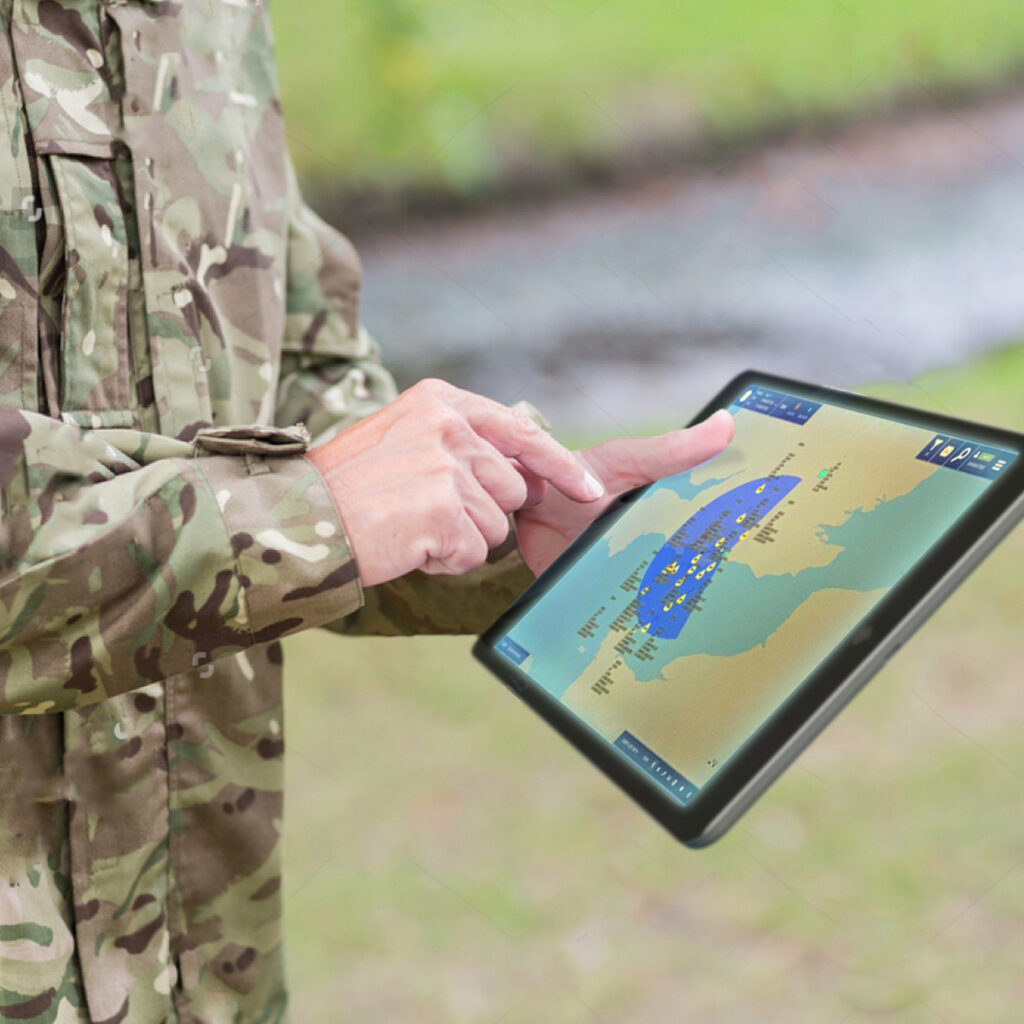In advance of rolling out new iterations of its SkyKeeper ground-based air defence (GBAD) command-and-control (C2) system, Lockheed Martin UK (LMUK) has laid out its pitch for SkyKeeper’s relevance to future UK air defence C2 requirements.
Speaking to selected journalists during an online briefing on 26 March 2024, Richard Turner, LMUK’s SkyKeeper business development manager, outlined how SkyKeeper is capable of delivering airspace management and surveillance for the UK’s upcoming Land GBAD and Project Serpens requirements.
The Land GBAD programme is intended to meet the British Army’s requirement for a fully integrated system of systems to “provide sufficient, effective capability to warn, inform, deter, and defeat all air threats [including aircraft, missiles, munitions, and UAS [unmanned aircraft systems] in order to prevent adversary interference from the air inhibiting Joint Force freedom of manoeuvre”, according to the British Army’s requirement notice.
Project Serpens, meanwhile, is the UK Ministry of Defence’s (MoD’s) project to deliver a next-generation weapon-locating system, with a digitally networked suite of sensor systems that detect hostile rocket, artillery and mortar (RAM) rounds, as part of the UK’s Zodiac future Land ISTAR system.
LMUK’s SkyKeeper is currently the battle management, command, control, communications, computers and intelligence (BMC4I) component of the UK’s Land Environment Air Picture Provision (LEAPP) capability and has been in service since December 2014.
Noting that the British Army’s LEAPP capability has “recently and successfully come out of the back of a C2 upgrade programme”, Turner stated that “the key significance of this is that the LEAPP capability has now installed the SkyKeeper software as its core operating system, so the central core of LEAPP is now Skykeeper”.
Designed with an open architecture, SkyKeeper has the ability to evolve and satisfy other requirements, said Turner, while emphasising that Skykeeper, developed out of LMUK’s Ampthill site in Bedfordshire, is a UK IP product and thus not restricted by the US International Traffic in Arms Regulations (ITAR) that LMUK’s US parent company must adhere to. The system therefore also has export potential.
Turner noted that the Land GBAD requirement involves a three-stage programme over 10 years. “Capability Uplift Programme One was just ‘Buy a little bit more of what we’ve currently got’,” he explained, which involves the UK’s Sky Sabre short- to medium-range air defence capabilities provided by MDBA, Saab, and Rafael Advanced Defense Systems. “But importantly, as part of the Capability Uplift Programme Phase Two, what [the British Army’s] 7th Air Defence Group and the MoD want to do is have an integrated and layered command-and-control capability for UK Land GBAD,” said Turner.
“So that will tie in their medium-range air defence aspiration capability,” Turner explained. “They want to integrate that into an integrated battle management command-and-control layer, but also integrate the SHORAD [short-range air defence] pieces and the counter-UAS [counter-unmanned aerial system] pieces as well, so that when 7th Air Defence Group deploy at the divisional level … in a peer-on-peer capability, then all of their air defence assets can be integrated across the piece to support to support the main divisional operation.
“And that is where we see the LEAPP capability, with now SkyKeeper software at its core, evolving and developing outwards, and from within, to evolve into that layered and integrated command-and-control capability for UK Land GBAD,” said Turner. “That would involve integration with the SHORAD piece [provided by Thales UK], Sky Sabre … but also importantly, it needs that integration upwards and outwards as well to make sure that the UK Land GBAD capability is not just isolated doing its own role, but has that ability to receive and exchange data with other non GBAD command-and-control capabilities.”
Capability Uplift Programme Phase Three, meanwhile, remains undefined, as it has not yet started its development and assessment phase.

Turner made the case that building out from the SkyKeeper software’s presence in the LEAPP capability “isn’t just a ‘big bang’ – imposing a capability onto the MoD – this is actually evolving a capability they already have”.
Beyond Land GBAD, Turner noted that “there are other programmes that are obviously being run within DE&S [the MoD’s Defence Equipment and Support organisation] that require a command-and-control capability to receive sensor information, make sense of that sensor information and then display it to operators, so that operators can then make a decision, and then that information can be further distributed to where it needs to go”.
Regarding Project Serpens, Turner said that “again, we see we see some synergies there with what the SkyKeeper capability can do in terms of receiving sensing information”.
A key attribute of the SkyKeeper capability, Turner noted, is that it “is not confined to a particular form factor”. At 7th Air Defence Group’s upcoming ‘GBAD Expo’ event, to be held in early July on the Thorney Island peninsula in West Sussex, LMUK will be launching four distinct iterations of SkyKeeper.
Firstly, there is SkyKeeper Command, which would likely be installed in a fixed location or an ISO container. Then there is SK Manoeuvre, which is effectively the same capability integrated into any armoured vehicle with a generic vehicle architecture (GVA), such as the British Army’s Ajax family of armoured reconnaissance vehicles, for which LMUK provides the turret.
SkyKeeper Flex, meanwhile, is effectively ‘SkyKeeper in a box’, where the capability is integrated into a 0.5 m3 palletised case that could be moved by two people and carried in a tactical vehicle: an iteration that has already been tested by 7th Air Defence Group.
Lastly, there is SkyKeeper Edge, where networked SkyKeeper information can be distributed to individual dismounted elements, such as manportable air defence system (MANPADS) teams, using whatever tablet-like user interface that team has available.
Turner additionally noted that, in theory, SkyKeeper could be expanded out to take in capabilities such as ballistic missile and hypersonic missiles defence, although he cautioned that this would depend on the appropriate sensors being networked into the overall air defence architecture.




